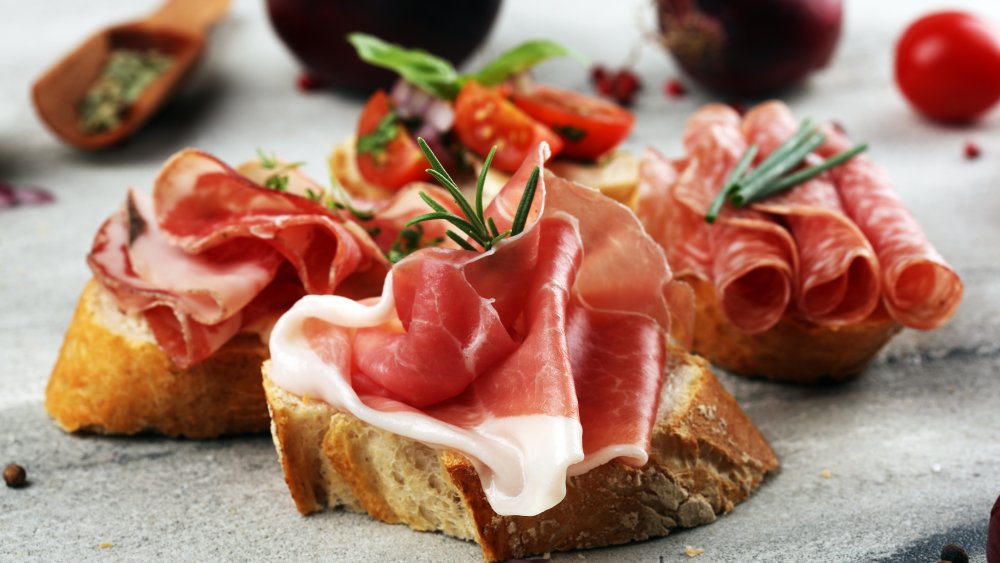The Real Difference Between Bruschetta And Crostini
Everyone loves bread. Especially the bread that is served when dining out at the local Italian restaurant. Italian food is one of the most popular cuisines in America, according to La Gazzetta Italiana. The United States began to experience an upward trend with Italian food in the 20th century, seeing an exceptional boom in the 1950s with returning WWII soldiers who had been stationed in Italy.
Some of the most iconic dishes like Chicken Tetrazzini (named after a famous Italian opera soprano), the New Orleans muffuletta (created for Sicilian workers), and the cioppino (created by Genoese fishermen who moved to San Francisco). Another common dish found at the table? Bread in the form of bruschetta and crostini. But many don't know the difference between the two (yes, there's a small difference to distinguish them). When it comes to bruschetta and crostini, the philosophy "bread is bread is bread" doesn't really apply.
So, what's the real difference between the bruschetta and crostini?
Italian food is known for its use of simple and fresh ingredients that are combined to make delicious, no-fuss dishes (via Amongst Romans). Italian cuisine focuses on helping a few quality ingredients sing on the plate, and it is no surprise that both bruschetta and crostini follow this ideal. According to Chowhound, the term bruschetta derives from the Italian word bruscare, which simply means "to roast over coals."
In its original form, bruschetta is typically a much larger hunk of rustic-style bread (compared to crostini) and has deliciously crunchy char marks from grilling. In a video for Chowhound, famed chef and author Lidia Bastianich shares an exquisitely simple recipe for her take on traditional Italian bruschetta, which is popular in places like Sicily and Puglia. Referred to as Fett'unta, this version involves rubbing garlic along the grilled bread and drizzling it with olive oil.
Now, crostini are normally smaller and made with white bread, like a simple Italian loaf or baguette slice, according to Martha Stewart. A Food Network article states that crostini translates to "little toasts," and they are served in a similar fashion as bruschetta – with olive oil and a few other ingredients. However, sometimes the word crostini describes a crouton-like bread used in soups and salads. Regardless of if you're Team Bruschetta or Team Crostini, both options are delicious and simple to make.

